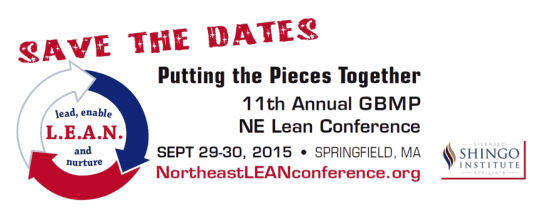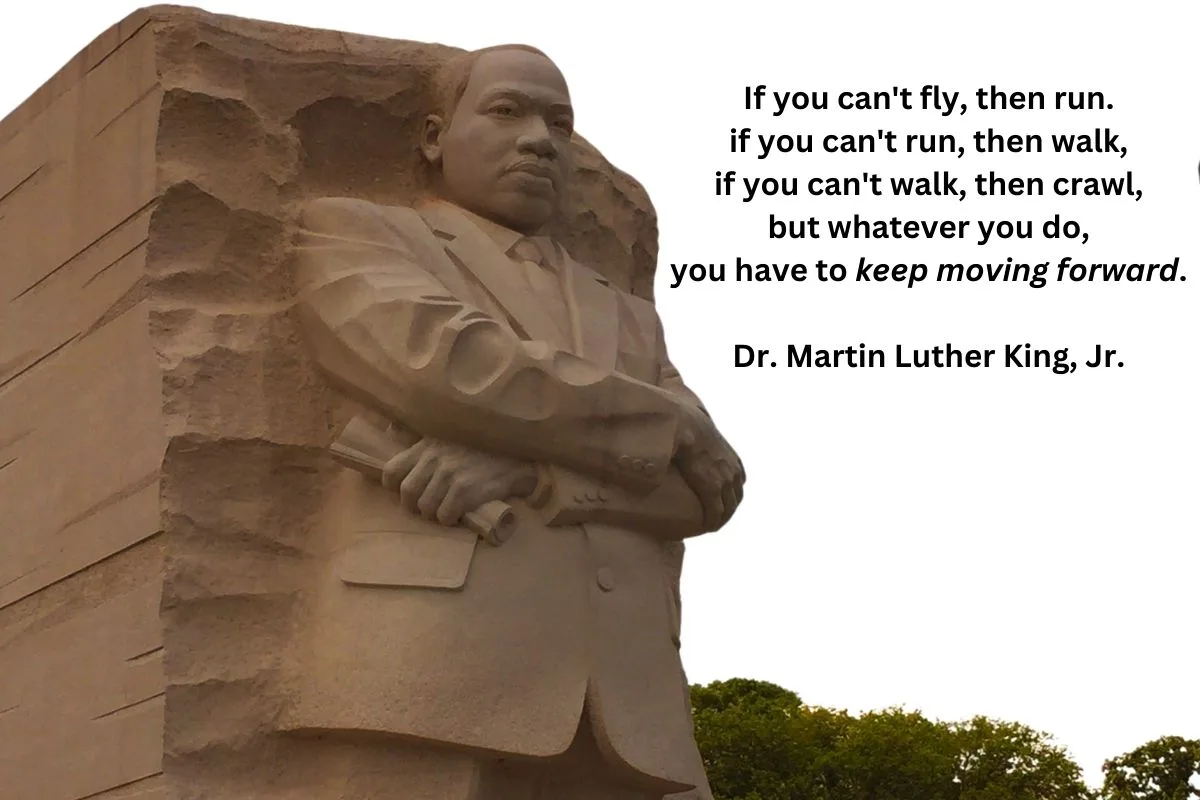Mark's note: Christina Kach is our guest blogger today, with a post about the recent North East Shingo Conference, where she was an attendee. See her past posts here.
Recently, my coworkers and I had the opportunity to attend the North East Shingo Conference in Springfield, MA (presented by the Greater Boston Manufacturing Partnership, or GBMP).
The theme of the conference, “Lead, Enable and Nurture – Putting People First,” was apparent throughout the two days. During the conference, our team was active in participating in the lectures, taking notes, and learning from the speakers. After the conference, as a team, we reflected on what we learned, our favorite parts of the conference, and our own lean journeys.
I wanted to share a few of my personal favorite take-aways:
How do we expect to win, if we don't take the time to define what winning actually is for our team?
Billy Taylor of Goodyear addressed this question in his opening keynote. He framed his plan around 3 simple steps: Define Winning, Align to Win (strategy deployment), and Execute to Winning (strategy is more than just deployment from “Align to Win” – we must act on it). Billy encouraged the audience to remember that winning is more than just metrics; it is also the people engagement that determines winning and is the key for sustained success.
The “Lean won't work here” mentality
Fortunately, teams from a variety of industries (lab work, offices, hospitals, and IT) were able to share their stories that help debunk this myth. These teams were even courageous enough to share what didn't work during their Lean journeys, so the audience could reap the benefits of their lessons learned and drive home the critical mindset that Lean isn't always perfect and certainly won't happen overnight. But it's worth the journey.
Seeking perfection as an end goal can be misleading
Mark Baker (from the Shingo Institute) gave a presentation that walked the audience through a detailed review of the Shingo Model and its supporting principles. As he spoke about “Seeking Perfection,” he called out that this principle isn't meant to be a burden or something unachievable that is setting our teams up for failure. (Haven't we all felt that at some point? Why am I seeking something I can never truly attain? ) Rather, it is about encouraging the desire to be the best, to create the mindset of continuous improvement in an organization.
“There is no ‘The Lean' system,” as Kim Barnas stated
Throughout her presentation, Kim talked about the pieces of Thedacare's Lean system – “system” being the key word and a popular one during the conference. We must go beyond the tools of Lean, the “how”, and get those tools, in conjunction with the “why”, to act as a system. Another important idea, is to adapt your Lean program to your company and your goals. Taking the exact replica of what another company did won't be the best fit for you, nor will you get all the learning that comes with creating your own program. We talk to experienced members of the Lean community and attend conferences to learn; it is then our job to apply what we've learned in the best way for our organizations.
Russ Scaffede echoed these thoughts by reminding the audience to adapt Lean tools to the problems you are trying to solve (as in, you don't have to use every tool in the toolkit!).
What's the Fuel of the Lean Engine?
In the funniest presentation of the conference, Davis Balestracci reminded us that people and relationships are the “fuel of the Lean engine.” Even the best-laid plans won't work if we aren't clear in our expectations and if we're not role modeling the right behaviors. Through his tongue and cheek humor, he implored the audience to focus less on cutting costs in their business worlds and, instead, focus on reducing the “chaos, confusion, complexity, and conflict.” If we can remove the wastes associated with those issues, we will get better business results, performance, and employee engagement.
I went into the conference with an open mind to learn, meet new people and connect with old friends, hear stories from different companies, and feel the energy from a larger Lean community. And I wasn't disappointed. This conference was very strategic, rather than being focused on the tactical. And, for me, that was great; it really pushed me to think strategically and to exercise a capability that I don't always use in day to day assignments, as well as one I am looking to develop as I progress in my Lean career.
Were you at the conference? What did you learn and enjoy?
What do you think? Please scroll down (or click) to post a comment. Or please share the post with your thoughts on LinkedIn – and follow me or connect with me there.
Did you like this post? Make sure you don't miss a post or podcast — Subscribe to get notified about posts via email daily or weekly.
Check out my latest book, The Mistakes That Make Us: Cultivating a Culture of Learning and Innovation:










